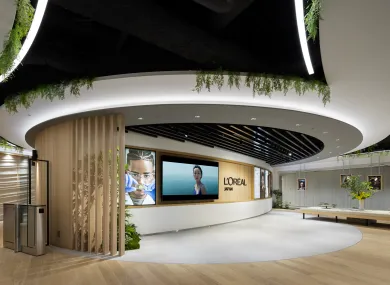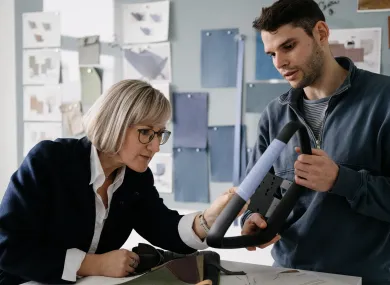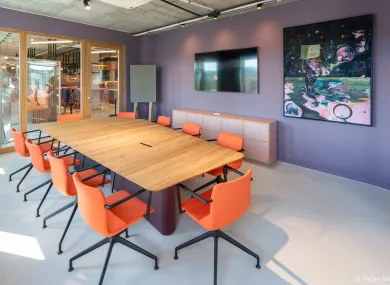The most important and groundbreaking decisions for a company are often made on conference chairs. Even though the design of the chairs has become more modern and the variety of materials has long since gone beyond black leather covers and chrome frames, one thing has not changed: As a rule, it is men who sit here to deliberate and make decisions. However, the fact that women are still severely underrepresented at management level has less to do with the stereotypical “executive chair” than with the fact that old structures are not being consistently developed further.
The design of the Intra conference chair counters this social reality. PHOENIX translated the concept of a high-quality conference chair from a traditional and prestigious to a modern and dynamic design language. Intra was developed with the user in mind and therefore has an innovative mechanism that synchronously adjusts the seat and backrest angle to the user’s movements, automatically taking into account individual weight and posture. In this way, Intra embodies a modern understanding of leadership culture in which all have equal space.
Alina Schnizler is a designer at Wilkhahn and deals with precisely these questions of product design. We asked her what is important to her when developing products and how she asserts her creative identity in the midst of numerous male colleagues. Every seat holds a story worth sharing …
Ms. Schnizler, to what extent has your personal development as a woman had an impact on your work as a designer?
My personal development and the topics I deal with in design have always been closely linked. While I hardly noticed the differences between the genders during my studies, I noticed differences in the way we work for the first time during my internship semester. The question of equality and stereotypical design occupied my thoughts so much that I dedicated my bachelor’s thesis to it.
I think one of the nice things about being a woman is that a portion of self-confidence is added with every year of life. This affects my entire way of working, but over the years it can be seen most clearly in my use of color.
You describe self-confidence not as a final state, but as an ongoing process of learning and growing. In your opinion, are there specific challenges that women face in the design industry?
Hella Jongerius says in her book “I don’t have a favorite color” that she didn’t want to work in textiles to avoid the stereotype that men study industrial design and women work with fabrics. But somehow she ended up in textiles – luckily!
I think that one of the biggest challenges in design is the different ways in which subtasks are valued. “Making it pretty”, “just a cosmetic change” – these are phrases that degrade projects and tasks and usually have a female connotation. Technical design or design approaches such as “form follows function”, on the other hand, are characterized by male representatives from the design and architecture industry and are subconsciously always valued more highly. Yet most of us have studied design today to make objects user-friendly, to integrate ethical and ecological issues and, of course, to make things “pretty”. After all, aesthetics is our profession – otherwise we could have become engineers.
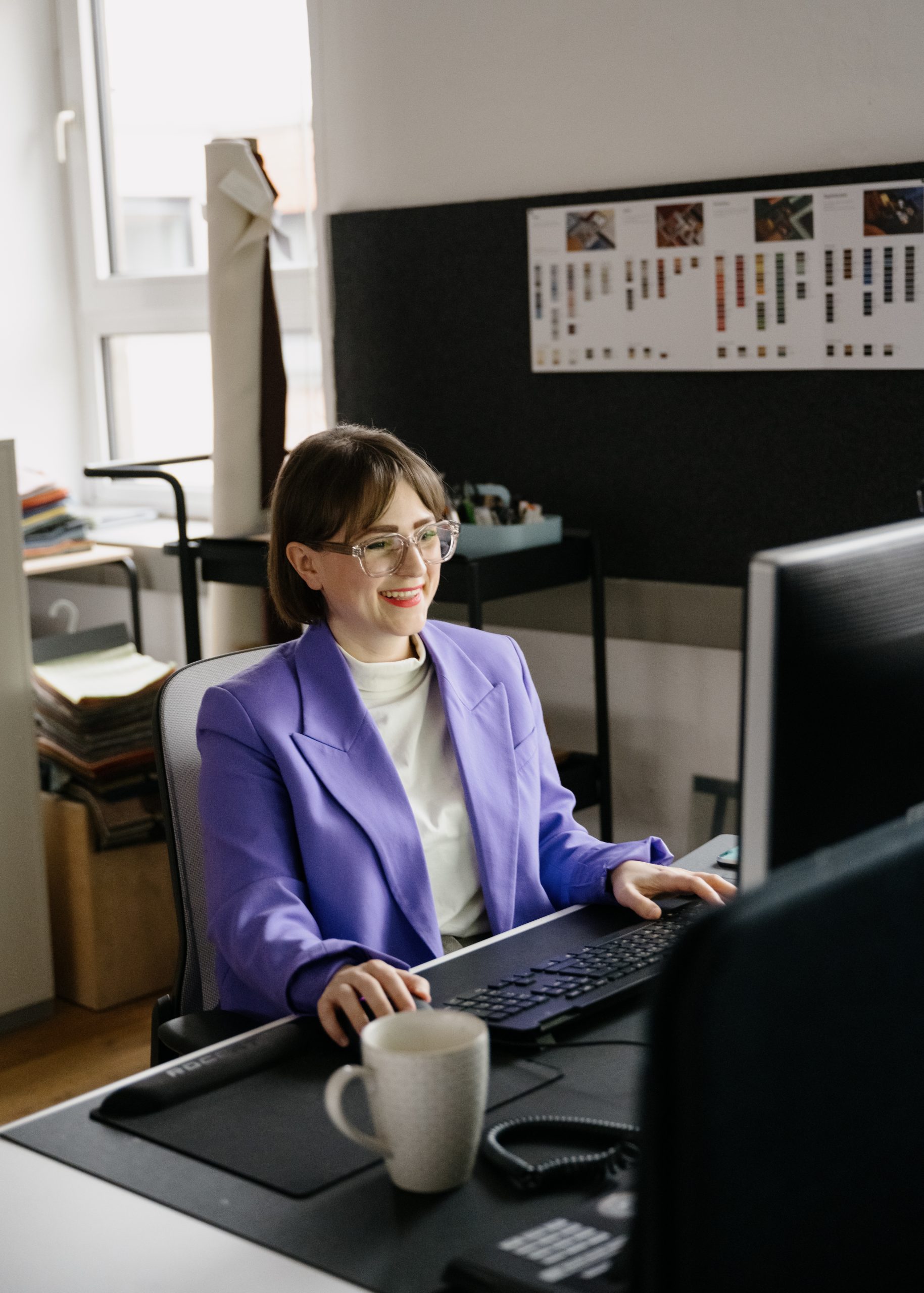
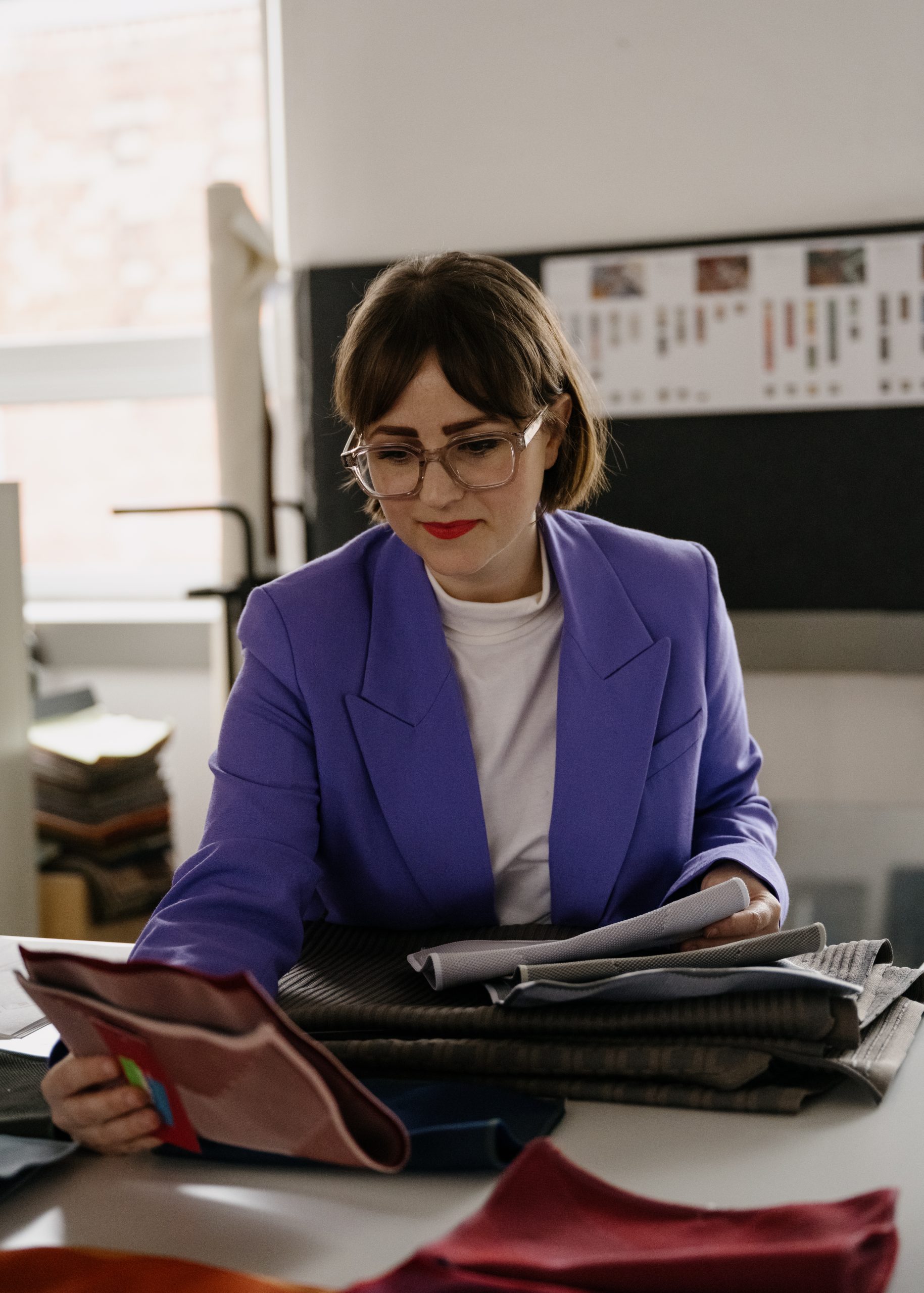
In what ways can your work help to break through this stereotypical portrayal of women and create a more diverse image?
I would like to approach the whole thing the other way round and break down stereotypical representations of men: The product that immediately comes to mind is the classic executive chair. High backrest, thick leather upholstery and shiny chrome. I’ve often asked myself what an executive chair should actually look like or whether it doesn’t generally make more sense to create products for people rather than for positions.
The Intra conference chair is a “chair for everyone”. To mark International Women’s Day this year, Wilkhahn and PHOENIX have created unique pieces that embody a contemporary management culture in which women play an important role thanks to their different color and material combinations. Which version is your favorite – and why?
As a former PHOENIX intern, this collaboration for International Women’s Day has a special significance for me. I think the team did a good job of portraying different characters with the various design approaches. From understatedly elegant to eye-catching and multi-layered. My favorite is the blue Intra variant. I’m generally a big fan of intense colors. For me, the shade of blue that was chosen radiates calm and strength at the same time and can be perfectly combined with other intense colors.
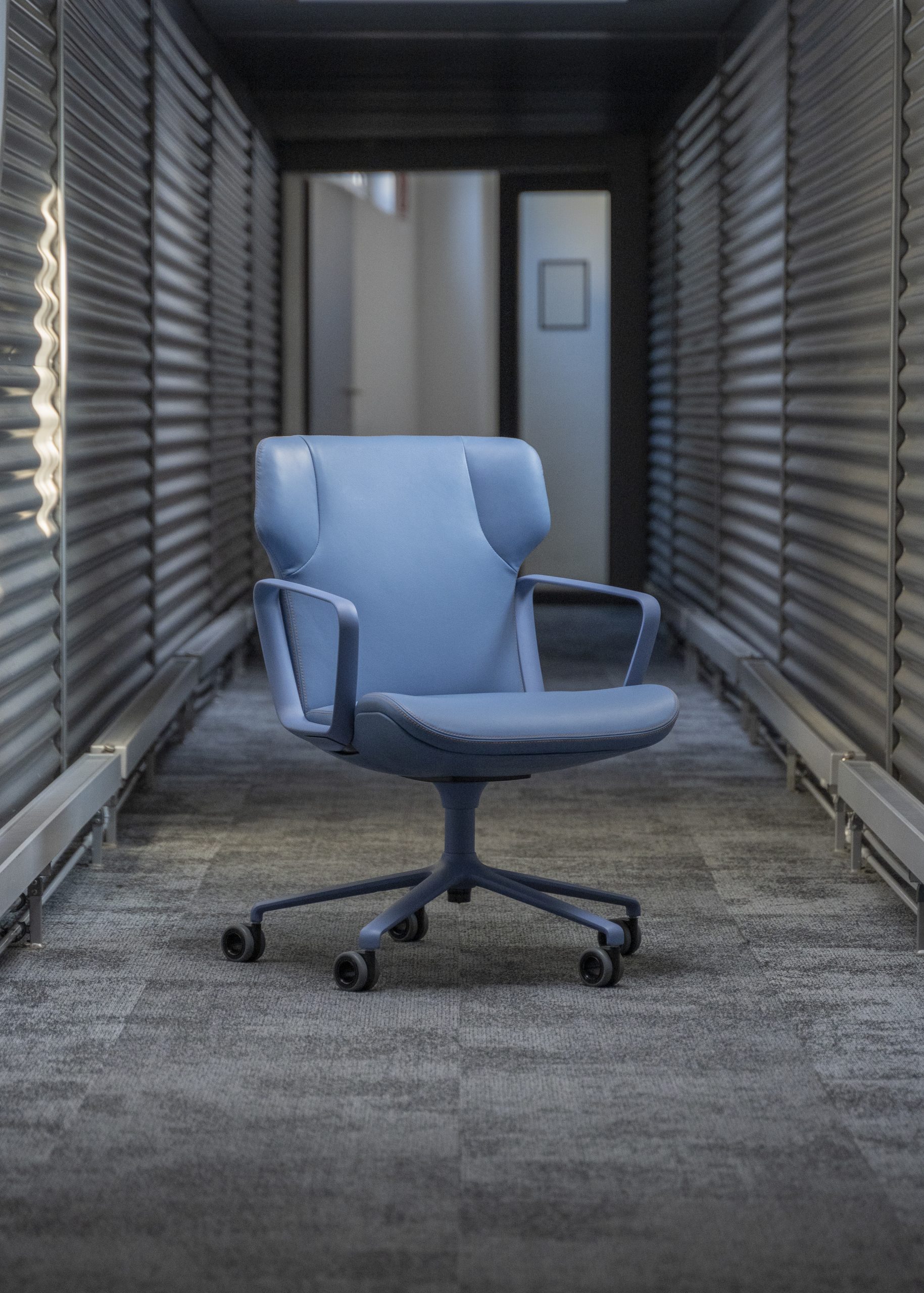
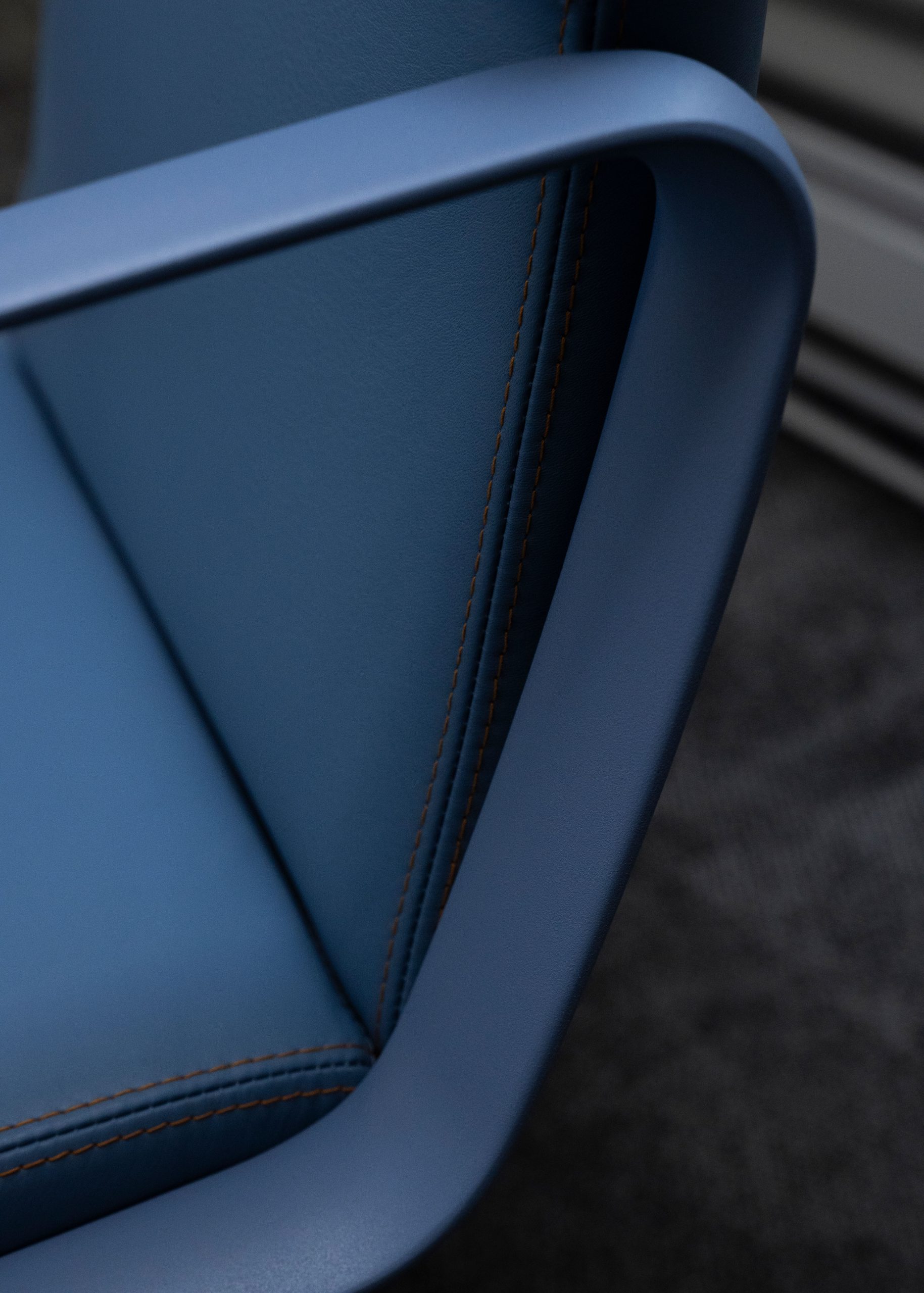
Keyword “collaboration”: how do you experience the working environment at Wilkhahn in terms of gender equality?
The office furniture industry is still a very male-dominated sector. That’s why in many meetings I’m the only woman sitting among a crowd of men. This makes communication at eye level all the more important. Many studies have already shown that diverse teams achieve better results – and I am absolutely convinced of this. We need different perspectives and experiences in order to design products that are made for everyone.
If you take a look at Wilkhahn’s design history, you will discover many men. We also have many women to thank for the decisive impetus: Anne-Katrin Sieferer, for example, was part of the design team for the first and revolutionary Trimensions chair ON. Offering women the same stage as men is a cornerstone for equality in companies. I would therefore like to see many more female role models in management positions in the industry in the future. Julia Wilkening-Martin is a great example of this at Wilkhahn.
Does the importance a company places on equality also significantly influence the successful development of innovative and appealing products?
In an age of artificial intelligence and algorithms, awareness of equality and diversity is more important than ever. I love the innovative products that have been developed by women for women in recent years. The entire medical sector offers incredible potential for new products, as research is finally focusing more on female health. In my opinion, equality should always be discussed as a matter of course in product development, just like sustainability.
Do you have any examples from your day-to-day work of how the involvement of women can make a significant contribution to the design process?
In our field of work, these are mainly ergonomic aspects. We test seat depth, seat comfort and backrest contours, but also the force required for various adjustments. We always take into account different genders and different body sizes and weights. It is therefore necessary to have women in the development team to point out these aspects and proactively address potential for improvement.
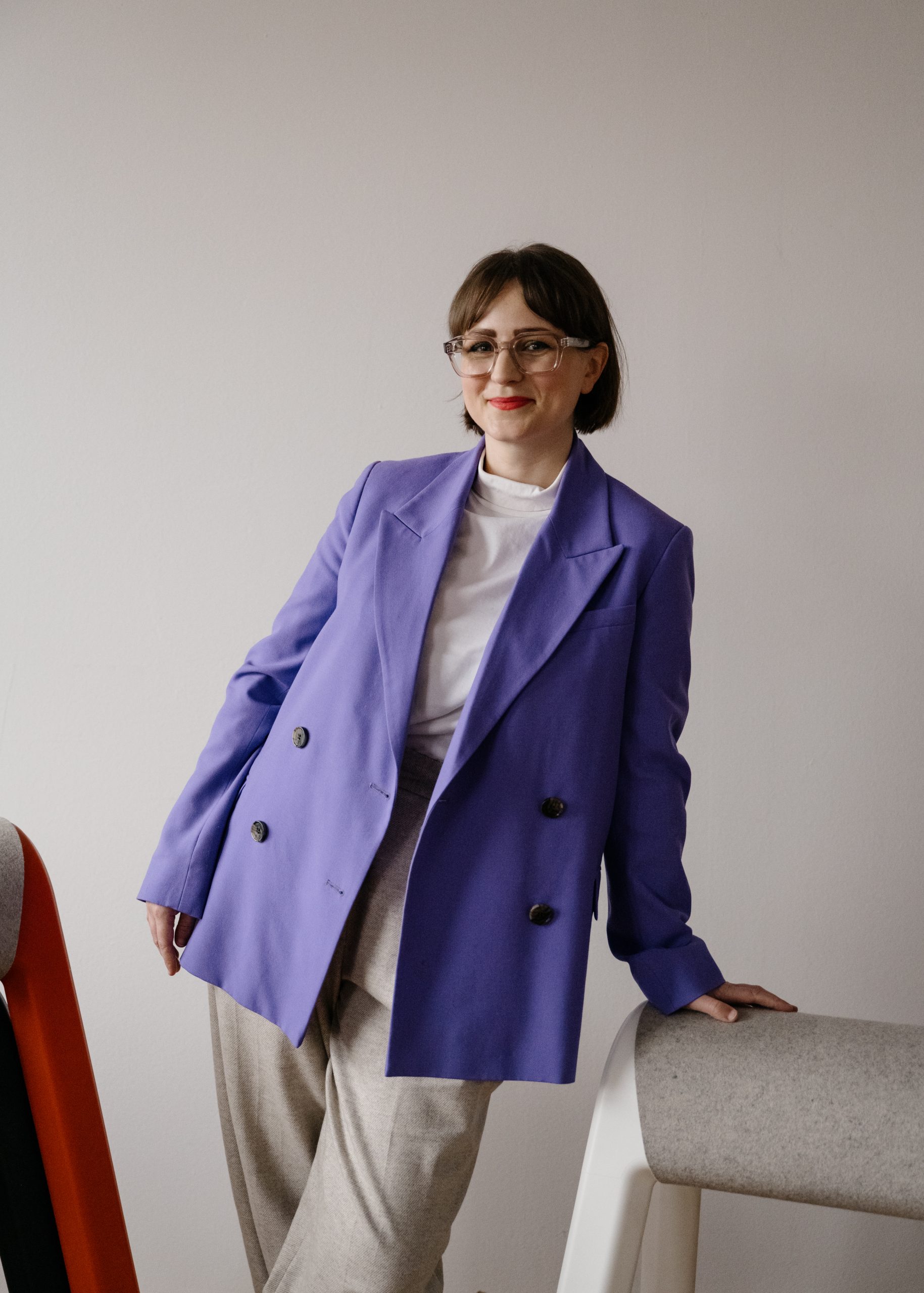
So office furniture manufacturers like Wilkhahn can also make an active contribution to promoting equality with their product design?
That brings us back to the executive chair. We design office landscapes with our furniture and thus also make a contribution to corporate culture. For me, usability is one of the biggest pivotal points. If I’m a woman moving a pinboard, I want to be able to do it on my own and not have to rely on the help of a male colleague. The way you sit can also play a role. If, for example, the mechanism of a conference chair doesn’t respond to small women, the result is always unequal sitting between a man – casual – and a woman – tense. Seat height is also a good example here: Anyone who has to sit in a chair with their legs dangling because the seat height is too high automatically feels like a child and accordingly not on an equal footing with everyone else present. If we keep these inequalities in mind, it helps us to create new product solutions.
What advice would you like to give women who have to assert themselves on the job in a male-dominated environment?
My most important lesson as a young professional was to learn to say no. In general, I think it’s very important to set clear boundaries. Disparaging remarks and comments, even if they were just said in passing, have absolutely no place in the world of work – or in private, of course. I also believe that we should show our wide range of emotions. When I’m really frustrated, I sometimes cry. That has absolutely nothing to do with weakness, but with processing emotions. Some people shout, others cry. If you put your heart and soul into your job, you can’t be a machine.
What I find most important is that women stand up for each other. It would never occur to me to make fun of a colleague’s figure or clothes. I also don’t like it when other colleagues do the same. Support each other!
And I’d like to give men in male-dominated industries a few words of advice: Dare to be different. Take parental leave or work part-time – after all, equality is for everyone.
Thank you very much for the inspiring conversation!
Have we sparked your interest in working at Wilkhahn?
The name Wilkhahn stands for design, innovation and quality. Working together in a spirit of partnership and a sense of responsibility towards society and the environment are a matter of course for us. These principles unite people who want to play an active role in shaping the future of the company. In our modern company organization with flat hierarchies, each individual can contribute with his or her individual skills and personality.
Click here for our vacancies and training opportunities.



